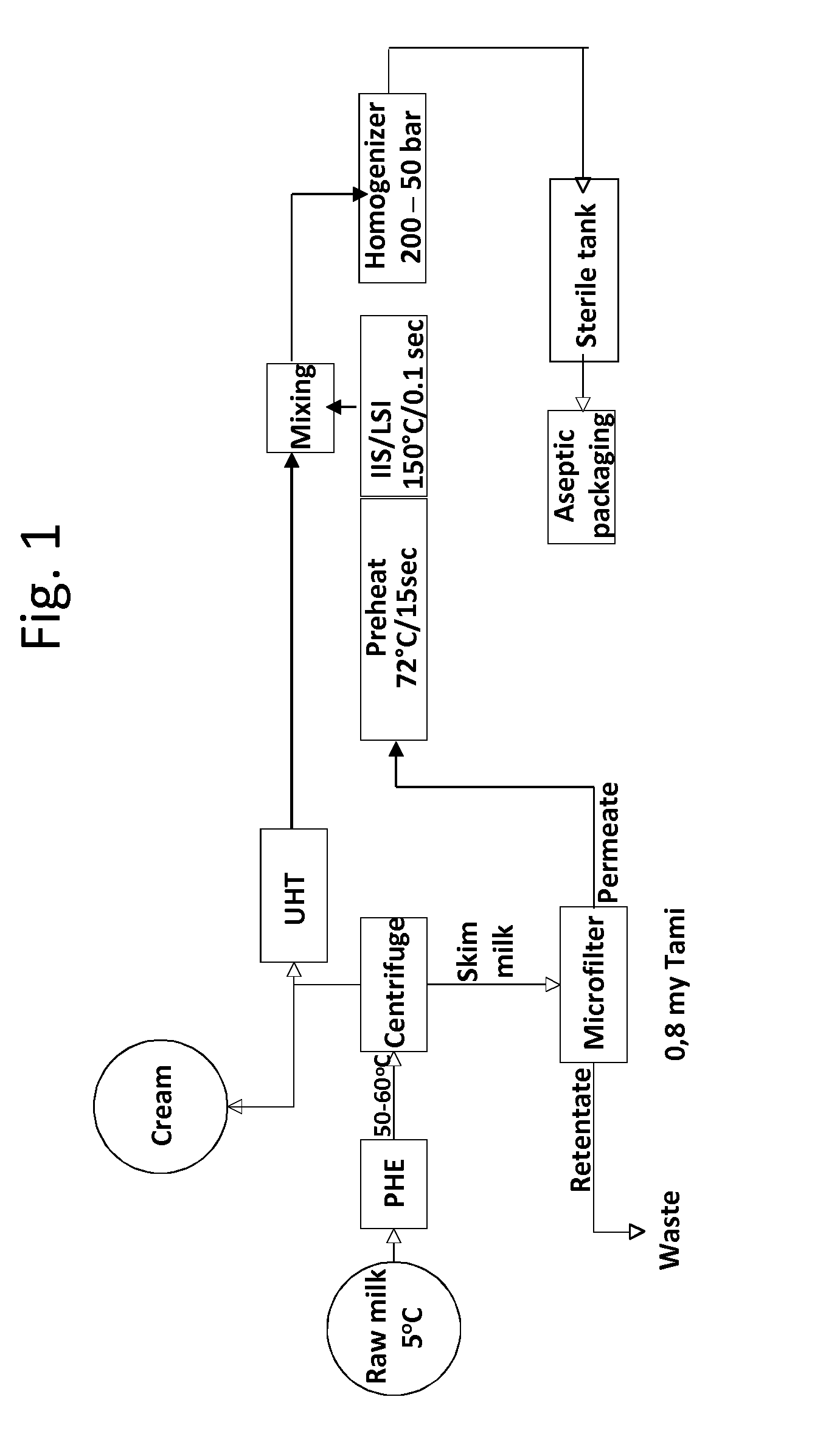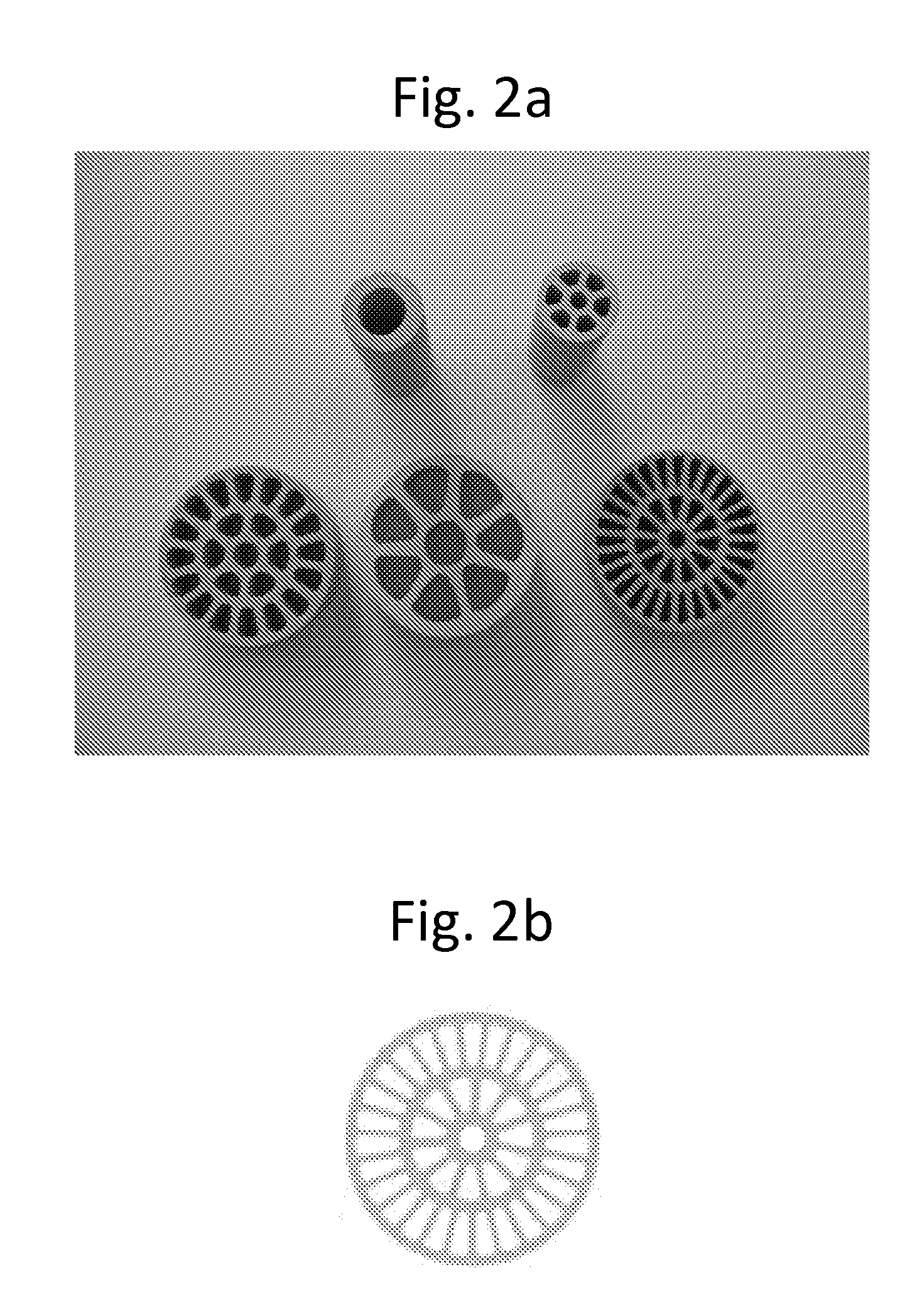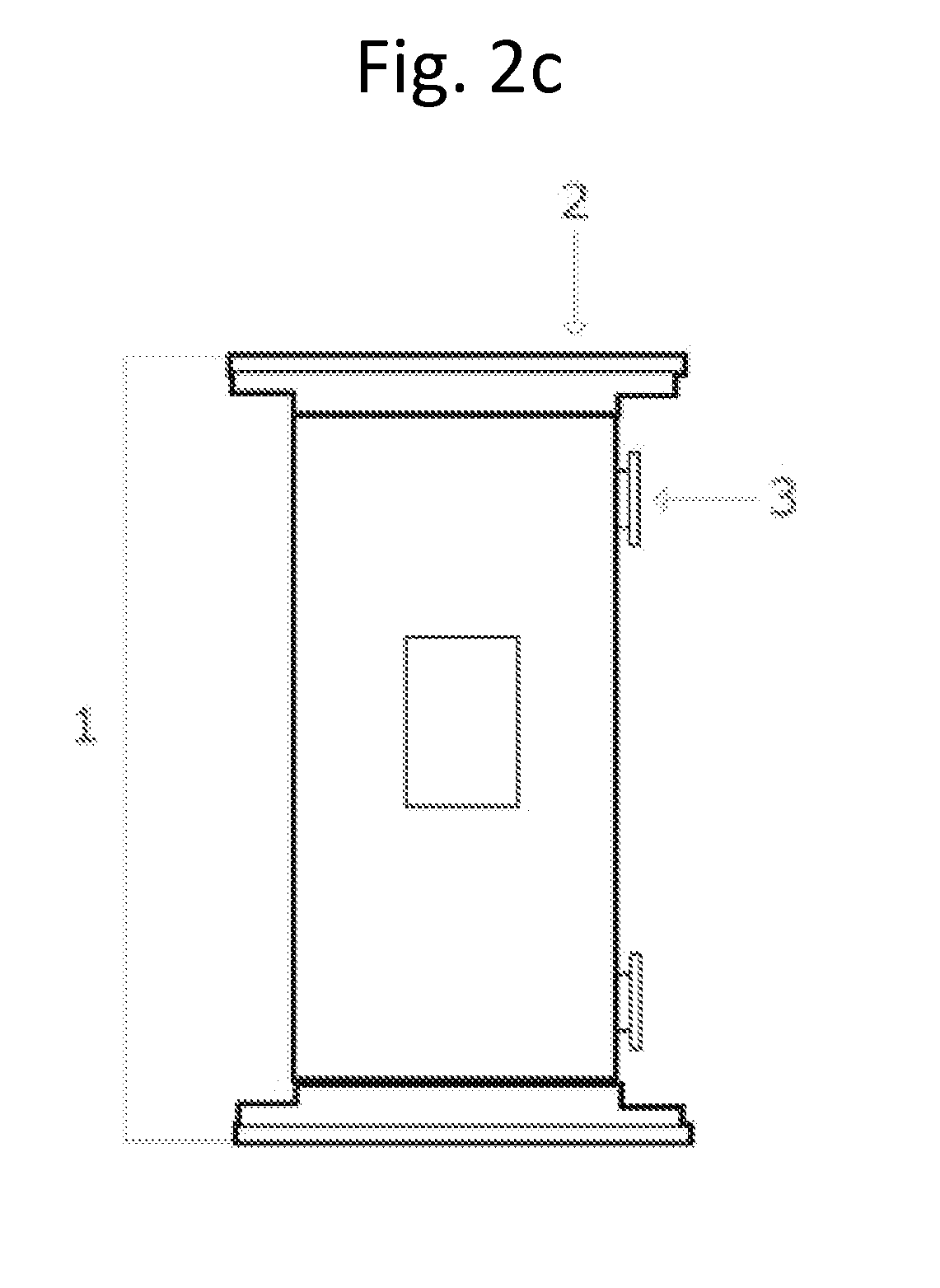Long shelf life milk and milk-related products, and a process and milk processing plant for their manufacture
a technology for which is applied in the field of long shelf life milk and milk related products, and a processing plant for their manufacture, can solve the problems of destroying all microorganisms (vegetatives and spores), affecting the sensory characteristics and nutritional value of products, and reducing the service life so as to increase the time of the processing plant, prolong the shelf life, and reduce the effect of energy consumption
- Summary
- Abstract
- Description
- Claims
- Application Information
AI Technical Summary
Benefits of technology
Problems solved by technology
Method used
Image
Examples
example 1
Production of Milk of the Invention
[0286]Long shelf life milk according to the present invention was produced within 24 hours of collection from the dairy farmer according to the following processing steps, with reference to the flow diagram in FIG. 1:
[0287]Step 1: Raw (unpasteurised) milk was collected and stored at 5 degrees C.;
[0288]Step 2: Raw milk from step 1 was preheated to 50-60 degrees C. using a plate heat exchanger and then subjected to centrifugation, using a standard dairy centrifuge to produce a cream fraction and a skim milk fraction;
[0289]Step 3: The cream fraction from step 2 was sterilised by UHT treatment, consisting of heating to 143 degrees C. for a period of 4 seconds in an infusion unit (APV) using direct steam infusion and then cooling to 20 degrees C.
[0290]Step 4: The skim-milk from step 2 was then microfiltered (MF) using isoflux ceramic tubular membranes (specifications given below) for tangential microfiltration where the re-circulation flow rate of the r...
example 2
Production of the Prior Art Milk
[0298]The prior art milk was produced according Example 1, but with the exception that step 4 (the microfiltration) was omitted, and the skim-milk of step 2 was fed directly to step 5.
example 3
Methods of Analysis
[0299]Analysis A: Sensory Testing
[0300]A sensory profile or QDA, Quantitative Descriptive Analysis, is a description of the sensory properties of a product as well as the intensity of properties. It is an established method that contains a list of attributes, normally in the order that they are perceived, and an intensity value for each attribute. Sensory profiling is described in ISO 13299:2003 and in ISO 22935-1:2009, ISO 22935-2:2009, and ISO 22935-3:200 which relate to Sensory analysis of milk and milk products.
[0301]Sample / Quality of Sample:
[0302]To be able to conduct the test there must be samples for training available before the test. For the actual test there must be enough amount of each sample. They should also be of representative quality.
[0303]The numbers of samples that can be evaluated during one session depend on the nature of the sample and the amount of attributes to be evaluated. If only a few attributes are to be evaluated, more samples can be ...
PUM
 Login to View More
Login to View More Abstract
Description
Claims
Application Information
 Login to View More
Login to View More - R&D
- Intellectual Property
- Life Sciences
- Materials
- Tech Scout
- Unparalleled Data Quality
- Higher Quality Content
- 60% Fewer Hallucinations
Browse by: Latest US Patents, China's latest patents, Technical Efficacy Thesaurus, Application Domain, Technology Topic, Popular Technical Reports.
© 2025 PatSnap. All rights reserved.Legal|Privacy policy|Modern Slavery Act Transparency Statement|Sitemap|About US| Contact US: help@patsnap.com



